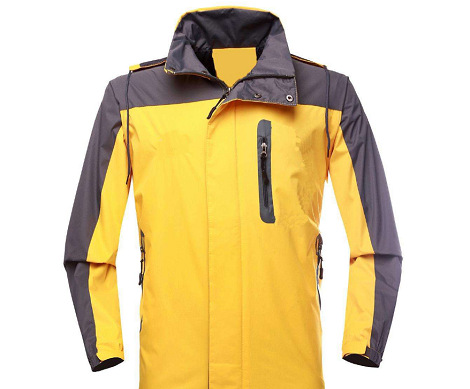Jackets are commonly worn for outdoor sports. They can protect the wearer in extreme environments such as high cold and thunderstorms. I believe many people have worn this type of clothing. Its various functions are determined by the fabric. , but not many people know about the fabrics of jackets. The following will introduce to you several fabrics commonly used in the production of jackets, as well as the cleaning methods of jackets.

Taslan Jacket: Taslan is a kind of fabric woven by mixing nylon filament and nylon air-textured yarn. The fabric will have the related properties of nylon, such as better The elasticity and toughness of the jacket are very consistent with the production requirements of the jacket. Although Taslan has a certain degree of waterproofness, it still needs to be waterproof, windproof and warm during the production process of the jacket. The jacket will have a thickness of nearly 1 cm The thermal insulation layer minimizes the loss of body heat.
Pongyang Jackets: Pongee is also a commonly used fabric for jackets. This is a kind of fabric made of polyester silk. The surface of the fabric will be shiny and the fabric will feel smooth. We all We know that polyester (polyester fiber) is a kind of chemical fiber known for its extremely high strength and wear resistance, so pongee naturally also has good wear resistance and strength. This type of product is wear-resistant and not easy to break. In addition to being available In addition to the production of jackets, it can also be used in the production of luggage and tent lighting products. The cost of the raw material (polyester) is not high, so the price of this type of jacket is not too expensive.
Composite fabric: The advantage of composite fabric is that it combines the characteristics of multiple fabrics. When making jackets, three layers of composites are generally used, 100D four-way elastic + TPU film + polar fleece. This is a Common combinations of jacket fabrics, of course, still need to go through other windproof and rainproof processing during the production process of jackets. The price of this kind of fabric will be higher than the two mentioned above.
How to clean a jacket:
First lay the fabric flat in a basin filled with clean water and soak it for ten minutes, then add washing liquid and scrub with a soft-bristled brush. Pay attention to the intensity of scrubbing. , of course, you must control the intensity when kneading, otherwise it will damage the protective film on the jacket, just clean it and dry it in a cool place.





